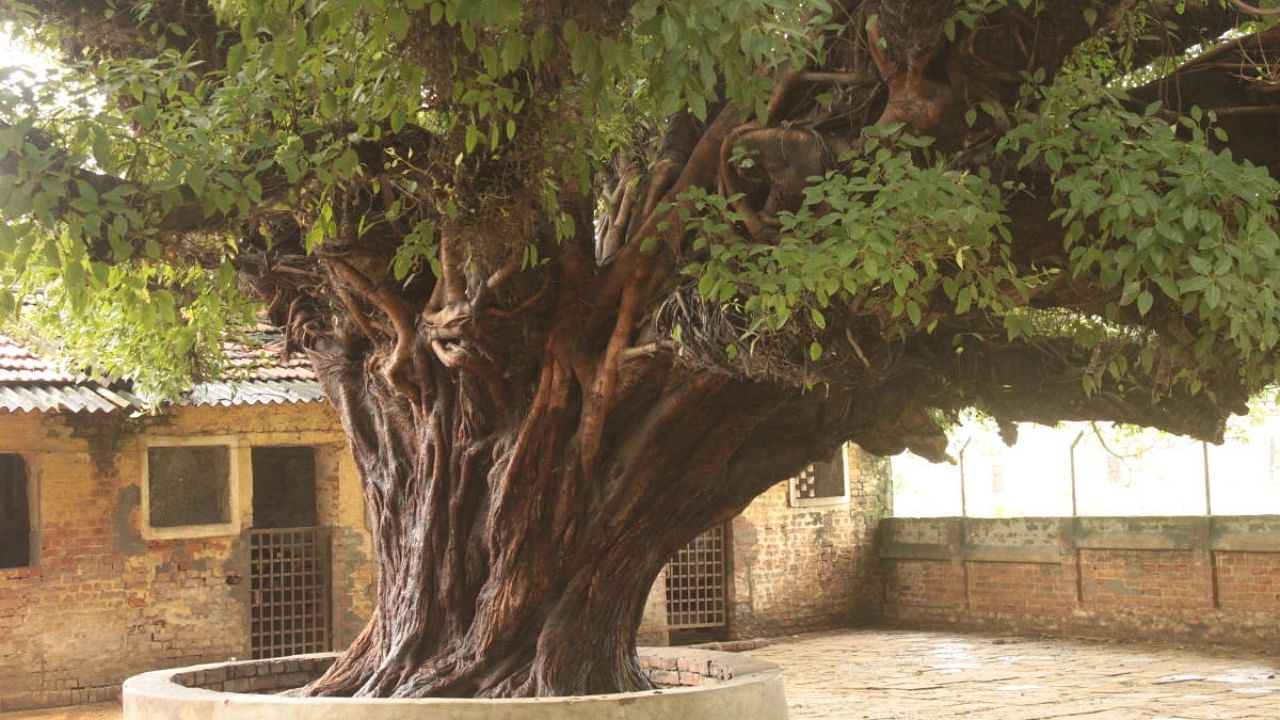
“Don’t you get tired talking about them?” asked a colleague as I expressed my awe and love, yet again, for the pakad (Ficus virens) trees. “No,” I responded. These trees at the campus I stay on in Benaras are a delight to the senses. Their size coupled with their graceful presence often reminds me of elephants. The branches are spread out like open arms: large yet gentle, and enveloped with leaves.
A research paper by Indrajeet Chaudhary and Dheeraj Rathore in Sustainable Cities and Society recommends Ficus virens as a sustainable option for urban planning on account of its “higher dust holding capacity, moderate dust capturing capacity and least susceptibility to air pollution”. Another paper lists Ficus virens in the top 10 ficus species in terms of the number of frugivore species recorded feeding on the figs. The number stands at 90.
The trees on the campus were planted a few decades ago, by someone wise, to provide shade for the cows. I am yet to gauge how the cows feel about this but colleagues have shared how they find these trees pleasant during the summers. They added that increasingly, one sees and hears less and less of the species.
The Uttar Pradesh government appears to have realised this. In 2019, it listed pakad, among others, as a species that could be felled only after permission. Recently, the chief minister announced that the species must be accorded priority in plantation drives. One does spot a few of these trees along the ghats in Benaras, but for some reason, pakad is not spoken of in the same vein as the banyan or the peepal.
Heritage tree
The plant appears to have made its mark on history, especially in the National Capital Region. “There is a lovely specimen in the Humayun’s Tomb complex” write Ramesh Pathania and Himanshu Bhagat in Living Monuments. They add that “the Pilkhan [tree] peaks, so to speak, in April.”
A website that lists heritage trees mentions one at Deer Park in the National Capital Regions as well. It eloquently describes the species thus, “a large fig tree, often with its roots wrapped around its trunk, that changes colour throughout the year as its leaves sprout, age, and fall.”
Pakad appears to have been prevalent elsewhere as well. Many villages, particularly those that are north of the Vindhyas, have also been named after the pakri, yet another name of the tree. Cursory Googling led to half a dozen villages in Bihar alone. The search also led to John Christian’s article from 1891 in The Calcutta Review, “But the name, no doubt, was Ghur Phakri, or the village where the Pakhri tree stood on the ghur, which is the common fireplace of the village, and where the villagers sit and gossip morning and evening in the cold weather, the fire being formed of the collected sweepings piled up in a place. The Pakhri tree spoken of here, from which the village took its name, was no doubt the one under which there was a village fireplace (ghur),” he wrote.
Massive trees
A description of the tree in Australia gives an idea of how massive pakads can get, “the Curtain Fig Tree is approximately 50m high with a trunk circumference of 39m. The canopy extends in a radius of approximately 30m from the trunk of the tree. Extensive aerial roots, which are now thick and interwoven, drop 15m to the forest floor, forming a curtain oriented north-west to the south-east over approximately 7m. The host tree has since rotted away and the fig is now a free-standing tree.”
Seldom has another pair of trees appeared so endearing and shapely even after sunset. Its thick canopy is darker than the darkness of the night. Its presence, in the dark, is akin to that of a close friend.